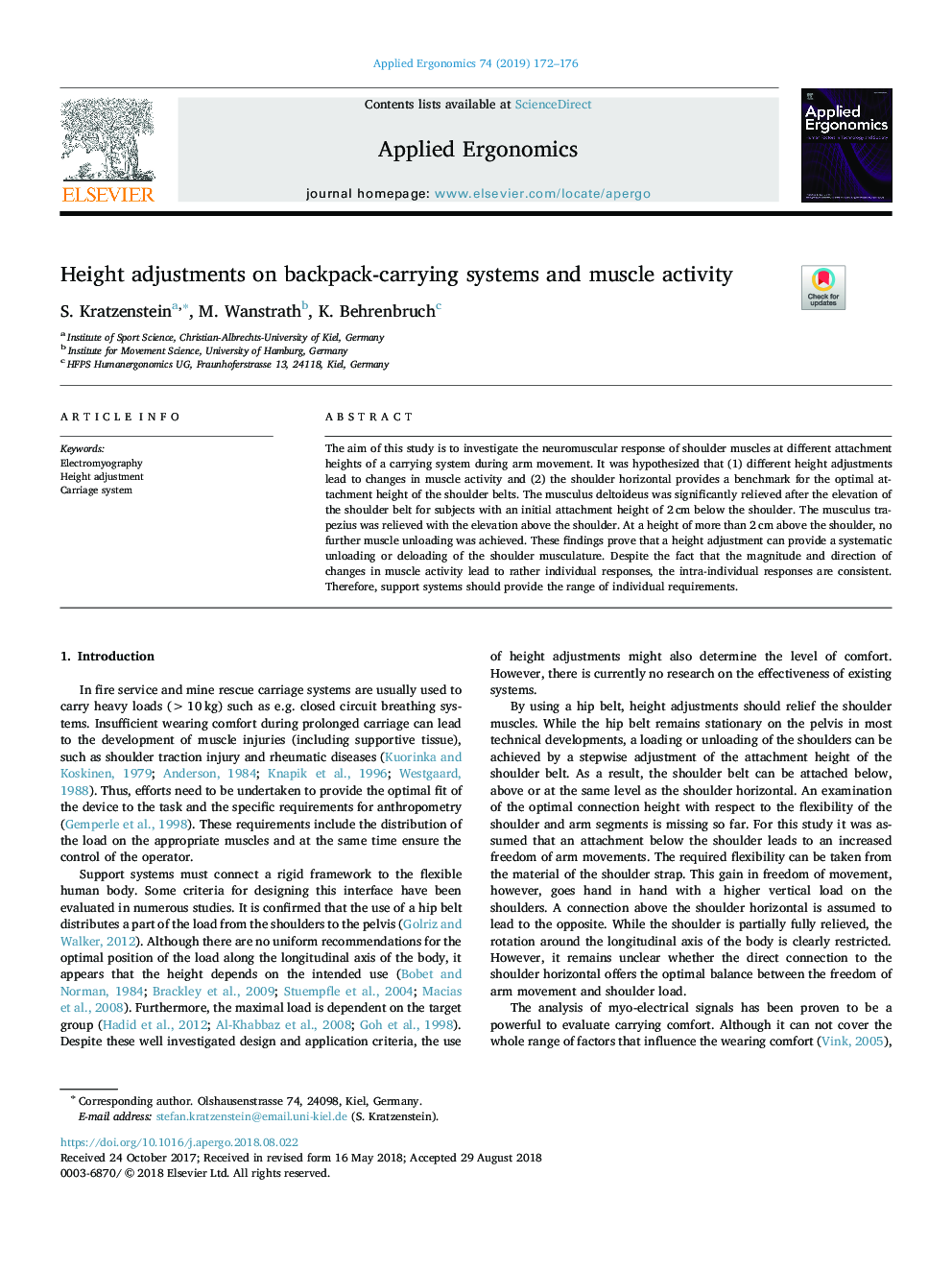| Article ID | Journal | Published Year | Pages | File Type |
|---|---|---|---|---|
| 11002919 | Applied Ergonomics | 2019 | 5 Pages |
Abstract
The aim of this study is to investigate the neuromuscular response of shoulder muscles at different attachment heights of a carrying system during arm movement. It was hypothesized that (1) different height adjustments lead to changes in muscle activity and (2) the shoulder horizontal provides a benchmark for the optimal attachment height of the shoulder belts. The musculus deltoideus was significantly relieved after the elevation of the shoulder belt for subjects with an initial attachment height of 2â¯cm below the shoulder. The musculus trapezius was relieved with the elevation above the shoulder. At a height of more than 2â¯cm above the shoulder, no further muscle unloading was achieved. These findings prove that a height adjustment can provide a systematic unloading or deloading of the shoulder musculature. Despite the fact that the magnitude and direction of changes in muscle activity lead to rather individual responses, the intra-individual responses are consistent. Therefore, support systems should provide the range of individual requirements.
Keywords
Related Topics
Physical Sciences and Engineering
Computer Science
Human-Computer Interaction
Authors
S. Kratzenstein, M. Wanstrath, K. Behrenbruch,
